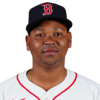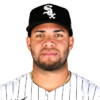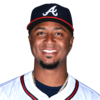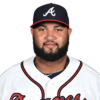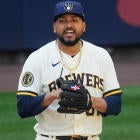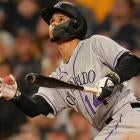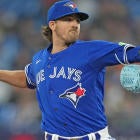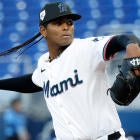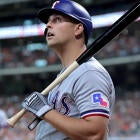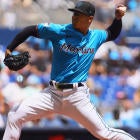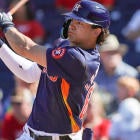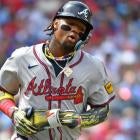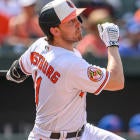Draft Prep Tiers: C | 1B | 2B | SS | 3B | OF | SP | RP
Heath's Breakouts 1.0 | Busts 1.0 | Sleepers | Scott's Top 100 prospects
What, you came looking for sleepers? These are breakouts. Know the difference.
Actually, don't worry about it. I'm not even sure I know.
Here's how I see it: a breakout is a special kind of sleeper lauded more for his upside than the value he presents. The discount may not be as large, but the rewards may be larger if he takes the steps I think he can.
That's parsing, though. The basic idea is the same: These players are deserving of special distinction for their potential production relative to their cost. If you'd prefer to think of them as Sleepers 1.1 or an appendix of some sort, you're not wrong.
Stick with me on this one, because it's mostly theoretical – a tribute to what I consider to be the smartest front office in baseball.
The Astros have done some special things with pitchers. Every team has its success stories – tales of scrap-heap pickups gone right – but with the Astros, it never seems like a happy accident.
It started in 2014 with Collin McHugh, a low-rent sinkerballer just looking for his next minor-league deal after taking his licks with the Mets and Rockies. Fast-forward six months, and he's an electric bat-misser, leading Fantasy owners to the promised land with a 2.73 ERA and 1.02 WHIP. That offseason, we learned it wasn't incidental. The Astros specifically targeted McHugh for the uncommon spin on his curveball, suggesting he could pair it with a four-seamer to remake himself into a power pitcher, abandoning his sinkerballing ways.
And that's when the world discovered the Astros had magicians under their employ.

It continued last year with Brad Peacock, who went from not throwing a slider at all to throwing one with an elite whiff rate one-third of the time, and Charlie Morton, who went down the same path as McHugh, transitioning from a sinkerballer to power pitcher even at age 33. Basically, if the data shows a way a pitcher can improve, the Astros – and the pitcher, in all likelihood – will implement it. We've seen it several times over.
Cole has some pretty obvious ways he can improve, as writers Travis Sawchik and Eno Sarris of FanGraphs have pointed out. The gist is this: Since his breakthrough 2015 season when he finished fourth in NL Cy Young voting with a 2.60 ERA, 1.09 WHIP and 8.7 strikeouts per nine innings, Cole's velocity has become less of a differentiator. Heat is the norm across the league, causing his fastball, for as fast as it is, to become one of his least-effective pitches, easy to square up and unlikely to deceive. His curveball, though shows some potential, and only one other team emphasized the curveball more than the Astros last season.
So what does it mean that they've turned their attention from bottom feeders like McHugh, Peacock and Morton to a former first overall pick like Cole, who's only three years removed from performing like an ace? And what does it say that they were willing to outbid everyone else for him even knowing they didn't have an opening in their starting rotation and will now have to leave out two of McHugh, Peacock and Morton?
Abracadabra!
I don't know what I expected from Rafael Devers when he got the call last year. The guy was a top prospect from the time he was 17 and performed at every stop in the minors, so of course major-league pitchers wouldn't have any more luck slowing him down. He, on the other hand, gave them something to worry about.
Three qualities in particular stand out: He struck out only 23.8 percent of the time, which isn't exceptional in the context of all major-leaguers, but for a 20-year-old in his first taste of the majors, it's uncommon to put the ball in play so often, on par with what Miguel Cabrera and Mike Trout did in their age-20 seasons. Even more uncommon? He put it in play everywhere – and equally, meaning 31.5 percent of the time to right field, 33.9 percent of the time to center and 34.5 percent of the time to left, which is of course a game-changer for a left-handed hitter at Fenway Park. Oh, and this particularly left-hander – again, at all of 20 years old – hit .400 (20 for 50) against left-handed pitchers.
We'll need to see him hit more home runs, and he'll need to elevate the ball a little more to deliver them. But he's just barely into adulthood and is already so advanced at the plate. The floor for him, in spite of his youth, is unreal, and the ceiling is something I'll forever pursue unflinchingly until he reaches it.
As a general policy, I avoid players who strike out 100 more times than they walk, which Nicholas Castellanos did almost exactly last year, so it's not surprising I didn't take a liking to him even when he was a much-hyped prospect speeding to the majors at age 21.
But now, here at age 25, he has some new tricks.
Quality of contact is a part of a player's skill set that I've only come to appreciate in the last 2-3 years, and you'd be hard-pressed to find a player who could match what Castellanos showed last year. His 24.5 percent line-drive rate, according to FanGraphs, ranked 10th among qualifying hitters; his 43.4 percent hard-contact rate ranked fifth. He was up there with stalwarts like Aaron Judge, Paul Goldschmidt, Corey Seager and, the poster boy for what quality contact can ultimately become, Freddie Freeman.
And it began to pay off in the second half. Castellanos started off cold, but ended up with a .299 batting average, 16 home runs and .882 OPS over the final 2 1/2 months of the season. And seeing as he did it with a not-so-mythical .316 BABIP, I'm thinking Castellanos could have performed that way from the start.
Sure, he could stand to walk more, but he doesn't strike out as much as he used to – or much at all, really – and most importantly, he hits the crap out of the ball.
I'm seeing a batting title contender. I'm second-guessing what his power peak might be. I'm targeting him in the middle rounds of every draft.
The most impressive thing about Luis Castillo's rookie season is he wasn't even himself during it. His 3.2 walks per nine inning after getting the call was a poor rate. His 1.5 per nine over 14 starts at Double-A prior was an exceptional one.
He was too careful, nibbling when he has the stuff to attack, and yet he still overpowered major-league lineup after major-league lineup.
And make no mistake: These were major-league lineups:
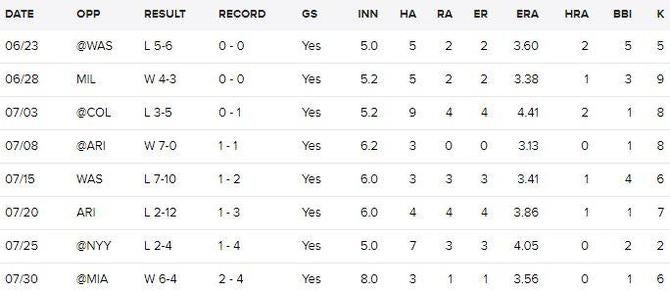
That's a murderer's row of offenses he faced over his first eight starts, and he more than held his own. His best work came later, when the schedule evened out.
The only thing that could slow Castillo down was an innings limit, which did in early September. But the impression was a lasting one. With a fastball that pushes triple digits and what may already be the game's best swing-and-miss changeup, the sky's the limit. The Pedro Martinez comparison is used too often among talent evaluators, but in Castillo's case, I kind of see it.
For now, I'll play it safe and call him the next Luis Severino, whose bread-and-butter pitch is actually a slider, not a changeup, but whose combination of control and stuff has taken the form of an ace. I expect something similar for Castillo, perhaps as soon as this year.
I could make this same argument for Byron Buxton, who's likely to go as many as seven rounds earlier and of course plays the outfield rather than a second base.
So instead, I'll make it for Yoan Moncada, a prospect of similar stature who had a similar problem: not enough contact against major-league pitching. But like Buxton, he began to turn it around last year. After striking out a ghastly 36.1 percent of the time in July and August, he cut down to a workable 27.5 percent in September. And after lining the ball a pedestrian 15.8 percent of the time in July and August, he upped it to a Tommy Pham-like 22.1 percent in September.
He began to recognize not only which pitches he could hit, but which he could wallop, and the result was a .276 batting average, five home runs and an .818 OPS for the month.
It's a small sample against what many would consider inferior competition in the season's final month, but it's measurable progress for a player who at this point last year many considered to be the most talented prospect in the game.
I don't know if he'll ever run like we hoped – he has yet to show much inclination to do so in the majors – but as a middle infielder, the bat alone justifies the going rate.
You could see when Ozzie Albies turned the corner last year – that moment he went from being a projectable teenager who could put the ball in play and run a bit to a prospect realizing the full extent of his potential. From June 3 to the time his promotion in August, he hit .308 with seven home runs, six stolen bases and a .867 OPS, introducing some pop to what was already a high-probability foundation.
And even as a 20-year-old facing major-league pitching for the first time, it translated. His nine doubles, five triples, six home runs and eight stolen bases in less than half a season's time gave him what would have been the sixth-most Fantasy points per game among second basemen for the season.
(And just so you Rotisserie owners don't feel left out of all this doubles and triples talk, his two most certain contributions are batting average and stolen bases, which happen to be two of the scarcest and most difficult to fill in the middle-to-late rounds.)
But here's what impressed me the most, and I'm not sure I can stress it enough: He had just a 14.8 percent strikeout rate – better than notable contact hitters Nolan Arenado, Eric Hosmer and Andrew Benintendi, to name a few – as a 20-year-old. The move up to the majors came so naturally that it reminds me a little of when Francisco Lindor broke in. We kept hearing he was some stud prospect and kept waiting for the numbers to impress us, and then the next thing you know, he's getting called up and ... oh, dear lord.
Of course, since then, Lindor has gone full slugger, which makes for a confusing comparison, so I'll put it this way: You know how Whit Merrifield hit .288 with 19 home runs and 34 stolen bases last year, forcing us to second-guess everything we thought we knew about player evaluation? Albies is capable of the same thing, except in his case we'll actually see it coming.
It wasn't too long ago – three short years, in fact – that Blake Snell began a minor-league season with 46 scoreless innings, eliciting comparisons to Clayton Kershaw.
Kershaw he may never be, but the way Fantasy owners are sleeping on him now tells me they've basically given up hope – again, after just three year's time.
Kershaw struck out 9.2 per nine innings over his first two big-league seasons, but he walked 4.6, giving him a FIP of 3.47. Snell actually isn't too far off, striking out 8.9 per nine innings while walking 4.5 for a 3.87 FIP.
A midseason demotion to Triple-A Durham may have been the wakeup call he needed. In seven starts there, he had a 2.66 ERA and 12.5 strikeouts per nine innings, but the biggest change was the 3.1 walks per nine after averaging 5.4 in his eight starts in the majors.
And while his return to the majors wasn't exactly seamless, eventually he began to find his footing, putting together a 2.84 ERA with 8.7 strikeouts per nine innings over his final 10 starts. His walk rate was a greatly improved 2.8 per nine.
"I think it's the confidence, the composure," Snell told the Tampa Bay Times at the start of September. "I feel like I've been staying more composed on the mound. I know what I'm doing, I know why I'm doing it. There's a lot more purpose, a lot more meaning. Each pitch matters."
He was more receptive to suggestions to coaches, including one from pitching coach Jim Hickey to move to the other side of the rubber. He worked on his balance and pitch sequencing – an indication he's realizing pure stuff isn't enough. And when it was more than enough at every other point in his life, that's a tough lesson to learn.
Yes, Kershaw he may never be. But, Robbie Ray? Chris Archer? Yu Darvish? An ace outcome is still in the offing.
You may remember Dylan Bundy appearing on last year's breakouts list with the understanding he would again be allowed to throw his slider-cutter hybrid, the pitch that made him the top pitching prospect in baseball before the arm troubles began in 2013.
And for the first month of 2017, it played out as hoped. On May 1, his ERA stood at 1.65, his WHIP stood at 0.98 and all was right in the world. But when he began to ease up on the pitch, the numbers took a drastic turn.
Where'd it go? Why'd he stop? His usage of the pitch dipped from about 25 percent in April to about 15 for the next three months. He didn't have a swing-and-miss offering without it, and so he got pummeled to the tune of a 5.61 ERA and 1.37 WHIP with 7.2 strikeouts per nine innings.
So tell us, Dylan of Bundy, what wast thou thinking?
"I think at different points in the year, you start favoring different pitches and pitches start working in your favor at different times of the year," he told The Baltimore Sun back in August.
I mean... it's true his slider wasn't as effective during the time he cut back on it, but it was still his best swing-and-miss pitch. It still needed to be his go-to.
But look, he came to his senses, got that usage back up in the 25 percent range for an eight-start stretch to close out a season, and what resulted was the best version of Bundy we've yet seen in the majors, even delivering his first three double-digit strikeout efforts.
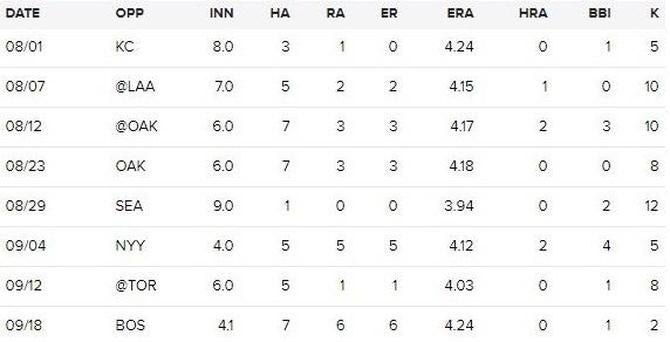
It works out to a 3.58 ERA, 1.03 WHIP and 10.7 strikeouts per nine innings, and it, to me, is the truest, purest form of Dylan Bundy – the one making use of all his weapons.
Surely, he realizes that now. Surely, someone on the Orioles coaching staff does. Surely, this saga, with all its fits and starts, has a happy ending, and surely we're at the precipice of it.
Know upfront that Austin Barnes' bargain rate has an expiration date. When the Dodgers find a taker for Yasmani Grandal, he'll zoom up draft boards.
What makes me so sure? Just look at the numbers. He's a catcher with plus power and uncommon plate discipline. It's what Buster Posey is. Even better, it's what Posey used to be.
If that sounds far-fetched to you, chew on this: taking into account the games he started and not his 49 reserve appearances, which were typically brief and unfruitful, Barnes averaged 3.38 Fantasy points per game in 2017. Gary Sanchez was No. 1 in that category, all appearances combined, with... 3.38.
The Dodgers are clearly buying it. On their march to the World Series last year, they kept sticking Barnes behind the plate instead of the guy who played most of the regular season, Grandal. And why wouldn't they buy it? Over his past two seasons in the minors, Barnes hit .295 or better with a .380 on-base percentage or better and an .824 OPS or better.
Of course, Grandal is a plus offensive catcher himself who the Dodgers just signed for $7.9 million to avoid arbitration. He'll get his at-bats if he's around, which is why I hope he's not.
But either way, Barnes will get more. And they'll be better.
Jordan Montgomery had a pretty good rookie season – probably better than anyone would have imagined when he won a rotation spot out of spring training. But some of the underlying numbers suggest he's just getting started as a Fantasy asset and could actually take a step forward this year.
It begins with the swinging strike rate, which is closer to elite than even his 8.3 strikeouts per innings would indicate, ranking 24th among qualifiers, better than Justin Verlander, Carlos Martinez and Rich Hill. And it makes sense if you look at his arsenal. The guy mixes his five pitches as evenly as you'll ever seen, and while none is a true standout, three – the curveball, slider and changeup – all produce above-average whiff rates. He's deceptive, and deceptive often flies below the prospect radar.
With that five-pitch mix, he generates weak contact. In fact, his hard-contact rate tied Max Scherzer for the lowest in the majors. Also in the top five? Stephen Strasburg and Clayton Kershaw.
Between that and his high fly-ball rate, Montgomery is predisposed to a low BABIP like the .275 mark he delivered last year, so no fear of regression there. He'll struggle with the long-ball because of it – and in not such a great park for it – but if he's limiting the hits overall, it's something he can navigate.
The clincher is his supporting cast. Maybe the home runs put his ERA somewhere in the 3.50 range, but with the roster the Yankees have assembled, it may not matter. They had the second-best offense in baseball last year and then added the reigning NL MVP, transforming their starting lineup from great to potentially historic in one fell swoop. And they already had the deepest and most dominant bullpen I've ever seen. Any of Aroldis Chapman, David Robertson, Dellin Betances, Tommy Kahnle and Chad Green would be closing for half the teams in baseball.
It's the perfect environment for wins: a historic lineup to give a pitcher a lead, and a historic bullpen to preserve it. Even if Montgomery does just what he did last year, pitching six innings or more about half the time, his Fantasy stature should see a boost, and there's a real chance he improves on his rookie campaign. A season much like Gio Gonzalez's 2017 isn't out of the question.
Before we pick him apart, let's just stop and appreciate what Jesse Winker did last year. After brief looks in April and June, he came up for good in July and managed to wrestle playing time away from Scott Schebler and Adam Duvall with a .904 OPS and a .375 on-base percentage that would have placed him among the top 25 qualifying hitters.
And nobody questions that aspect of his skill set. Throughout his minor-league career, Winker was one of the most disciplined hitters, walking nearly as much as he struck out to give him a .298 batting average and .398 on-base percentage in his six years there. So clearly, there's an innate hitting ability that raises his floor and gives him a better chance of tapping into his potential.
The problem? The seven home runs he hit in his 121 at-bats in the majors were as many as he had in his last two minor-league seasons combined.
The easy response is to dismiss it as a fluke, a product of the random chance that's ubiquitous in baseball. He kept rolling threes in this game of Catan, getting all of the wheat, all of the ore and all of the sheep, when really that one little settlement on the six should have come up most often. And maybe a fluke is all it is, but in this particular instance, I'm not willing to assume as much.
Winker did, after all, have a couple 15-homer seasons earlier in his minor-league career, which of course counts for more down there than it does up here, where more strikes are thrown, more muscle is added and, ahem, the balls are juiced. That last point isn't just a throwaway. In this offensive environment, where record numbers of players are hitting 20-plus home runs every year, I believe anyone with a certain level of bat skill has a chance of reaching that mark. Winker would certainly fit the bill.
Even though the power evaporated on him late in his minor-league career, the scouting reports always left the door open for more, and the dip coincided with a wrist injury in 2016. I also have a theory that Winker's patience worked against him in the minors, where, again, fewer strikes are thrown. He knows to wait for a pitch he can wallop and got it more often in the majors.
Bottom line is I think Winker is the most talented hitter the Reds have developed since Joey Votto, and even if he doesn't profile as a 30-homer man, 20 with his hitting skills would be enough to make him a true standout. Now he just needs to move one of Schebler and Duvall out of the way for good.
In what may go down as one of the more regrettable trades in Jerry DiPoto's hyperactive tenure, Luiz Gohara found himself in a pitching rich Braves system last offseason, traded for two ill-fitting parts, and quickly emerged as the best of the bunch, overcoming his past work ethic and conditioning concerns to overpower hitters as one of the younger players across three levels.
He even got a look in the majors late in the year, and while his 4.91 ERA, 1.36 WHIP and 9.5 strikeouts per nine innings didn't send the Fantasy Baseball world into a frenzy, the combination of strikes and stuff was noteworthy.
In those five starts, he had a strike rate of better than 67 percent and a swinging strike rate of better than 20, according to Baseball-Reference. The only four qualifying pitchers to meet that same criteria were the same quartet everyone is looking to draft in the first two rounds: Clayton Kershaw, Max Scherzer, Corey Kluber and Chris Sale.

Granted, it's a tiny sample, but it's a better reflection of ability than the traditional numbers we use to measure players. He'll have to fight for a rotation spot this spring, and with Brandon McCarthy and Scott Kazmir coming over in the Matt Kemp deal, he may be on the outside looking in.
But take note: An organization with a rich pitching tradition has invested a great number of resources in finding its next ace, and in Gohara, with his high-90s fastball and swing-and-miss slider, it may have one.









